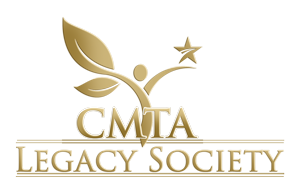The STAR Funding Process
The CMTA Board will on occasion seek out targeted proposals in specific disease areas. Funding is not solicited via open calls. When proposals are invited, they will be reviewed via the following process, which aims to reach a funding recommendation within six weeks:
- STAR Advisory Board Members, including both Scientific Experts Board members and Therapeutic Experts Board members, will conduct a first-level scientific review on TRANSLATIONAL projects brought to, or identified by, the CMTA. The initial pre-proposal is limited to three pages and must include specific aims.
The STAR Advisory Board Members will provide a recommendation for one of two outcomes:
- Reject the proposal if there is insufficient interest.
- Request a full proposal from the investigator, including a detailed budget. (Please note: It is CMTA policy that indirect costs shall not exceed 10 percent of the total.)
- Applicants whose projects are green-lighted for a full proposal will then have two weeks to submit it. All full proposals would include a research plan with preliminary data, budget, timelines, and information about the investigative groups involved the project. Collaborative efforts will be emphasized.
- ONCE A FULL PROPOSAL IS RECEIVED, both the Scientific Expert Board and the Therapeutic Expert Board will review it and make recommendations (Scores + Comments). The Scientific Expert Board will evaluate the scientific merit of the proposal, and the Therapeutic Expert Board will interrogate and confirm that there is a therapeutic opportunity/asset that will benefit the CMTA STAR therapy development mission. Each advisory board review and recommendation will be completed in two weeks or less. Both of the advisory boards’ recommendations (Scores + Comments) will be passed to the CMTA Board of Directors.
- At the end of the six-week process, the CMTA Board of Directors will approve/reject the project for funding. Resubmissions of proposals will not be accepted
- After the CMTA Board of Directors acts, the CMTA will document, agree and sign off on the research plan with the research investigator institution.
Evaluation Approach
Project proposals will be scored with a specific set of criteria in 2 stages. The first stage will emphasize scientific excellence and the completion of milestones that lead to another funding event. The second stage will separately evaluate the translational and commercialization potential of the project.
Scoring System
0 – Fails to address the criterion or cannot be judged due to missing or incomplete information.
1 – Very poor. The criterion is addressed in a cursory and unsatisfactory manner.
2 – Poor. There are serious inherent weaknesses in relation to the criterion in question.
3 – Fair. Broadly addresses the criterion, with significant weaknesses which require correction.
4 – Good. Addresses the criterion well; minor improvements are possible.
5 – Excellent. Successfully addresses all relevant aspects of the criterion in question.
Scientific Project Scorecard
Project Design
1.1 – Quality of experimental design.
1.2 – Likelihood of the research proposal to meet all the key objectives.
1.3 – Innovation (i.e. novelty in discovery, approach, technology)
1.4 – Overall impact of the project to CMT research.
20 points maximum
Excellence of the Personnel/Environment/Resources
2.1 – Scientific quality and technological expertise of the individual participants.
2.2 – Ability to provide the contributions expected.
2.3 – Quality of environment and resources for proposed research.
15 points maximum
Workplan Excellence
3.1 – Conceptual quality and soundness of the work-plan outline, including approximate budget, timelines for deliverables. Outline of Future Directions.
3.2 – Planning for potential complications, alternative strategies. Benchmarks for success established.
3.3 – Probability that the project will produce results that will contribute to translational development for CMT.
15 points maximum
Translational / Commercial Scorecard
Scientific-Technical
1.1 – Translational Research innovation of the project? What problem is it solving?
1.2 – Scientific-technical competition? Alternative approaches considered?
10 points maximum
Commercialization
2.1 – Do the research objectives lead to commercial objectives?
2.2 – What is the risk associated with the attempted commercialization?
2.3 – Probability that the funding will produce results that will lead to a patent, license, external funding?
15 points maximum
Market
3.1 – What is the strategic market opportunity catalyzing interest? Competitor approaches defined? Understanding of where project would land next (e.g.; Exit)?
3.2 – Potential economic funding identified to assist in further technology or therapeutic development?
10 points maximum
Product/Service Enablement
4.1 – Solve real market need? Has this been well defined?
4.2 – Sufficient intellectual property (IP) protection? Freedom to operate?
4.3 – Other IP requirements associated with the project requiring a license?
15 points maximum





